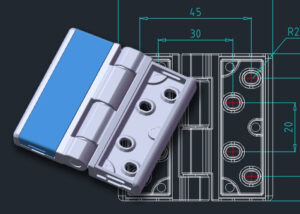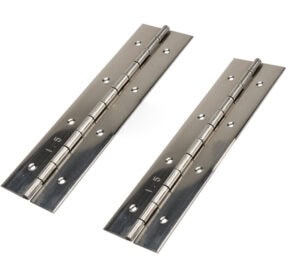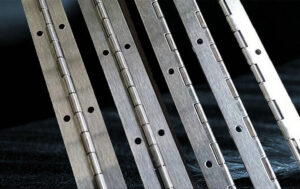Ensuring that door hinges are positioned correctly is crucial to maintaining security and functionality. Misplacing hinges can compromise both the door’s integrity and security.
Exterior Door Hinges: An Overview
Exterior door hinges are often required for outward-opening doors. Common in areas with high wind or safety regulations, these hinges support doors that swing outward, offering certain practical benefits. For example, outward-swing doors help conserve indoor space, making them suitable for small entryways. Additionally, they allow for quick emergency exits, particularly in public buildings where safe and accessible egress is paramount.
However, exterior hinges present unique considerations in terms of both climate adaptability and building codes. For example, heavy-duty hinges can enhance durability against frequent use and exposure to elements, but careful selection is necessary to prevent wear and corrosion.
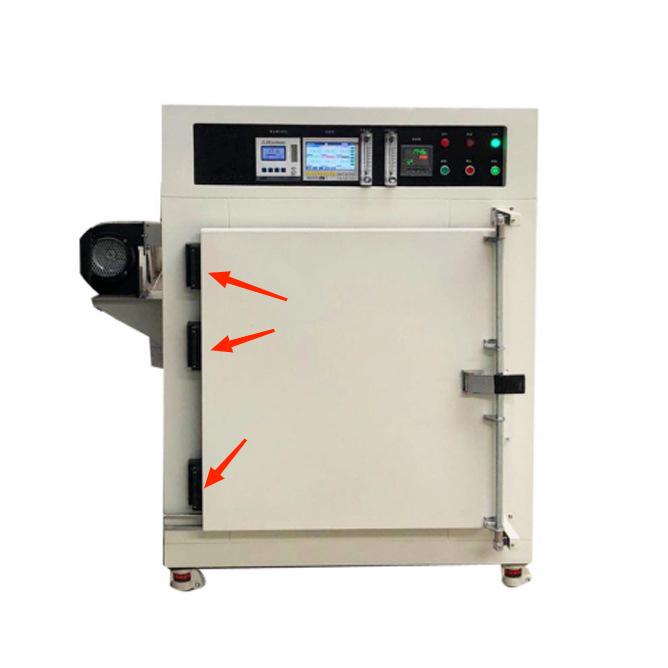
Security Concerns with Exterior Hinges
While functional, exterior hinges may pose a security risk, as they can be accessed from the outside. This accessibility can make it easier for unauthorized individuals to tamper with or remove the door if the hinges are not adequately secured. Using hinges with non-removable pins or incorporating tamper-resistant designs, such as detachable hinges, can significantly mitigate these risks. These types of hinges secure the pin from external tampering and provide additional security by making it challenging to disassemble the door from the outside.
Security hinges, like those with stud bolts, add another layer of protection by making it nearly impossible for the door to be removed, even if the hinge pin is exposed.
The Role of Security Hinges and Hinge Pins
Installing security hinges with specialized hinge pins is a simple yet effective way to safeguard an outward-swing door. Non-removable pins are designed to be locked in place, preventing removal from the exterior side. Similarly, tamper-proof and marine hinges are also options that can endure harsher environmental conditions, protecting both residential and commercial properties from forced entry attempts and prolonged exposure to moisture or salt air.
Security hinges with internal locking mechanisms provide an additional barrier, ensuring the hinge pins remain intact.
Regional Influences on Door Swing Direction
The decision to use outward-swinging doors is often influenced by regional climates and cultural building norms. For instance, in Scandinavia, exterior doors frequently swing outward to offer better insulation against heavy snow. Outward-swing doors also prevent rain from pooling in entryways, making them suitable for homes in areas with frequent downpours. Building codes may dictate the swing direction, especially in hurricane-prone zones where doors that swing outward are often mandated.
Understanding these regional considerations can help homeowners make informed choices based on both climate and cultural norms.
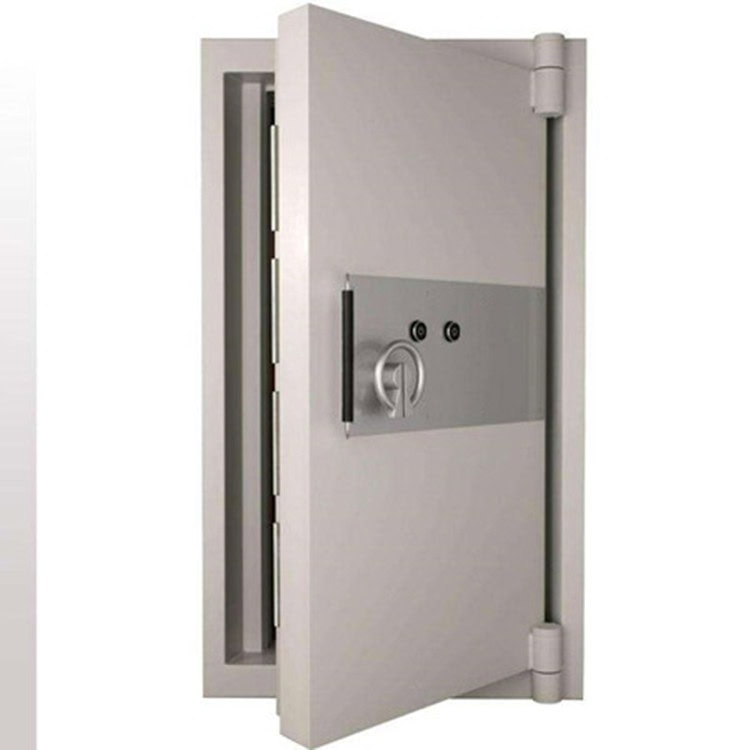
Functionality and Space-Saving Benefits
Outward-swing doors, supported by exterior hinges, maximize indoor space. In buildings with limited entryway space, such as small businesses or studios, an outward-swinging door can allow for a more efficient layout. Unlike interior doors, which swing inward, these doors do not require indoor clearance, freeing up valuable floor space.
Exterior hinges, such as piano hinges, which offer a longer and more even distribution of support along the door edge, provide the added stability needed to maintain the door’s alignment over time.
Types of Doors Best Suited for Exterior Hinges
Exterior hinges are typically found on entry doors, utility doors, and emergency exits, where frequent and unimpeded access is essential. Emergency exits in particular benefit from outward-swinging doors, as they ensure easy egress in case of fire or other emergencies. Utility doors in industrial settings may also use exterior hinges to accommodate large or frequently accessed areas.
Heavy-duty hinges are often preferred for these high-traffic doors to maintain alignment and reduce wear. Choosing the right hinge type for the door’s function can improve both durability and ease of use.
Heavy-Duty Exterior Door Hinges and Their Advantages
Heavy-duty exterior hinges are essential for doors exposed to the elements or frequent operation. These hinges are often crafted from corrosion-resistant materials like stainless steel or treated metals, extending their durability and performance in demanding environments.
In commercial or industrial applications, heavy-duty hinges ensure that doors remain aligned and functional even with constant use. Additionally, heavy-duty hinges contribute to the overall stability of the door, preventing sagging or misalignment over time.
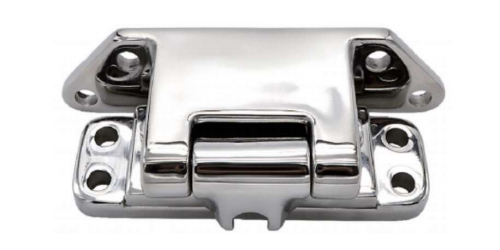
Non-Removable Pins and Tamper-Proof Hinges: Enhancing Security
Non-removable pins are critical for enhancing security on exterior-hinged doors. These pins are often engineered with a locking mechanism, securing the pin inside the hinge to deter tampering. This feature is particularly useful for exterior doors, as it prevents individuals from lifting the door off the frame by simply removing the pins.
Security hinges are available in multiple designs, each suited for specific security needs. Some use welded hinges to ensure that the pin remains securely in place, while others feature concealed screws to hide hinge access points.
Installation Guidelines for Exterior Hinges
Proper installation is crucial for maintaining security and function. Installing exterior hinges with a secure alignment and correct positioning reduces potential gaps that could otherwise compromise security. Screws should be tightened securely, and adjustments should be made to ensure proper alignment of the door.
Regular maintenance, such as inspecting screws and checking for corrosion, will extend the hinge’s longevity and help prevent mechanical issues. Installing weld-on hinges can provide additional stability for heavy doors that may be subject to frequent movement or force.
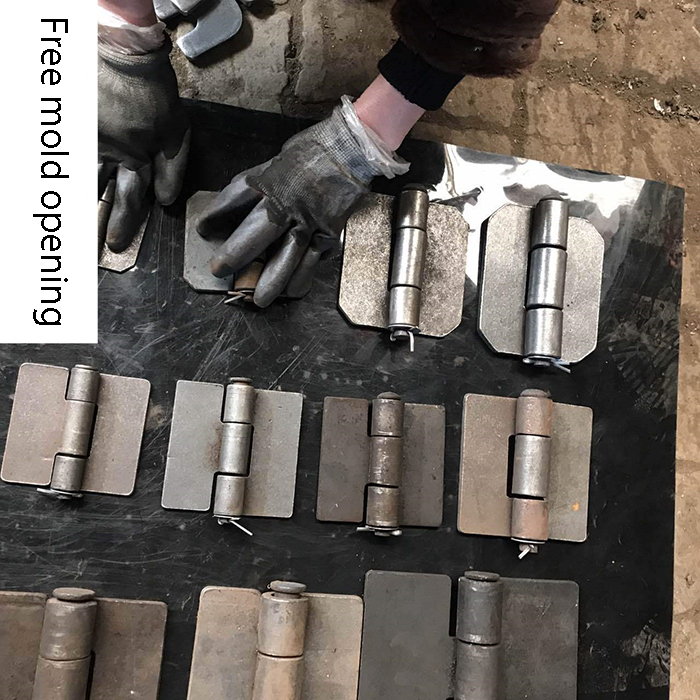
Alternatives to Exterior Hinges for Increased Security
Concealed hinges are an alternative to traditional exterior hinges, offering a more secure solution by keeping hinge access points hidden. Although they can limit the swing direction, concealed hinges are ideal for high-security applications where the aesthetic or practical need for hidden hardware outweighs the convenience of exterior access.
Some concealed hinges also support soft-close functionality, adding an extra layer of safety and control to the door’s operation, making them suitable for both residential and commercial use.
Conclusion
The decision to place door hinges on the outside depends on specific needs related to security, space, and environmental factors. Choosing the right hinge type and implementing security solutions can enhance both safety and door functionality.

